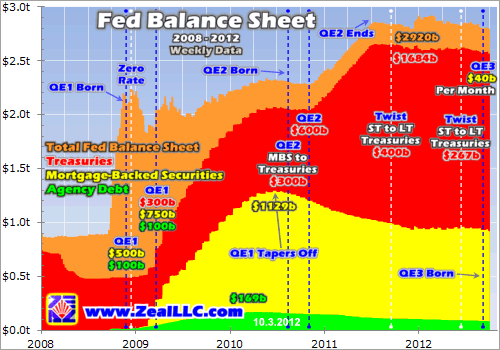I can only say: I'm sorry, America. As a former Federal Reserve official, I was responsible for executing the centerpiece program of the Fed's first plunge into the bond-buying experiment known as quantitative easing. The central bank continues to spin QE as a tool for helping Main Street. But I've come to recognize the program for what it really is: the greatest backdoor Wall Street bailout of all time.
 |
| QE tosses money in the air, lands in pockets of rich & bankers. |
What printing money does is help the people who have money. As for the peons (i.e., most of the rest of you), well, running the QE digital currency creation machine drives up prices, reduces real wages and eats away at the purchasing power of savings. QE distorts economic trade-offs as well, favoring the financial sector and its scions, while disfavoring people who have or want real jobs producing real things, impeding growth in the real economy. And oh ya, I almost forget to mention -- QE is also the monetary vehicle for driving the huge debt bomb down the road.
People, like Huszar, who do the work understand it best.
In its almost 100-year history, the Fed had never bought one mortgage bond. Now my program was buying so many each day through active, unscripted trading that we constantly risked driving bond prices too high and crashing global confidence in key financial markets. We were working feverishly to preserve the impression that the Fed knew what it was doing.
It wasn't long before my old doubts resurfaced. Despite the Fed's rhetoric, my program wasn't helping to make credit any more accessible for the average American. The banks were only issuing fewer and fewer loans. More insidiously, whatever credit they were extending wasn't getting much cheaper. QE may have been driving down the wholesale cost for banks to make loans, but Wall Street was pocketing most of the extra cash.
Three trillion dollars of QE
Whoa baby, He got it again. Mr. Huszar concludes in his Wall Street Journal oped,
QE isn't really working.
Unless you're Wall Street. Having racked up hundreds of billions of dollars in opaque Fed subsidies, U.S. banks have seen their collective stock price triple since March 2009. The biggest ones have only become more of a cartel: 0.2% of them now control more than 70% of the U.S. bank assets.
As for the rest of America, good luck. Because QE was relentlessly pumping money into the financial markets during the past five years, it killed the urgency for Washington to confront a real crisis: that of a structurally unsound U.S. economy. Yes, those financial markets have rallied spectacularly, breathing much-needed life back into 401(k)s, but for how long? Experts like Larry Fink at the BlackRock investment firm are suggesting that conditions are again "bubble-like." Meanwhile, the country remains overly dependent on Wall Street to drive economic growth.We said it this way last April.
The money changer in chief doesn't understand or promote a value driven economy. Real exchanges of actual goods and genuine services drive value and build a strong, broad based and resilient economy and sustainable economic growth. The demand and production led economy that we should be building has attributes that reach into every household.
Party on people while you can, because this will not have a pretty ending.

TRULY GREAT STUFF
ReplyDelete